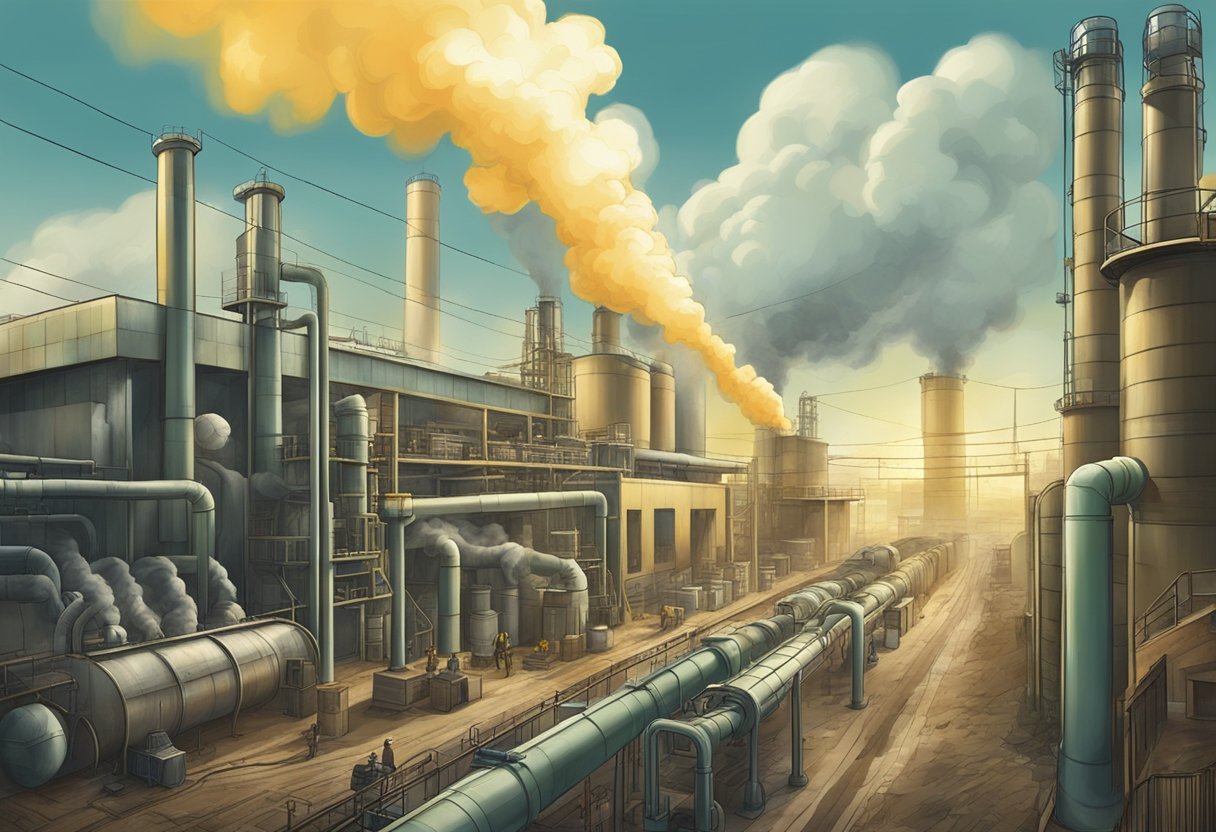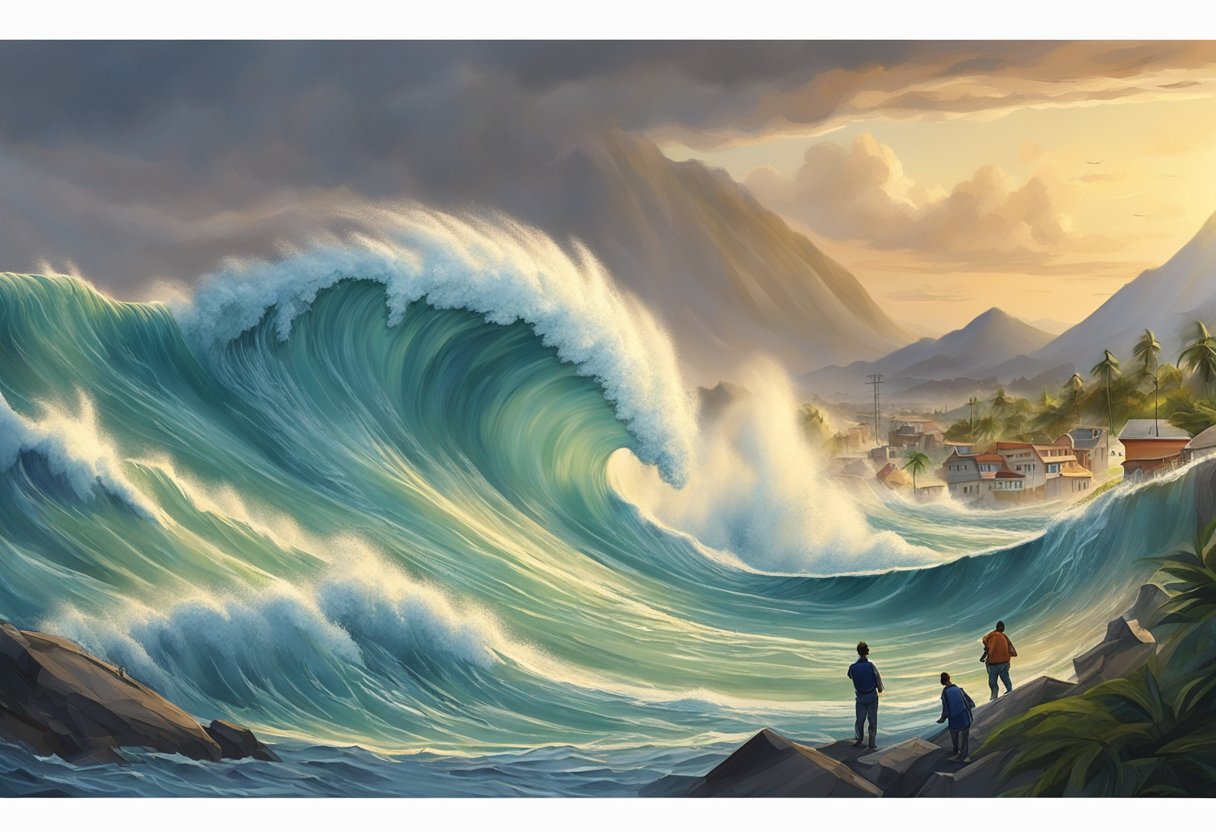The Krakatoa Eruption of 1883: Global Climate Impact and Far-Reaching Consequences
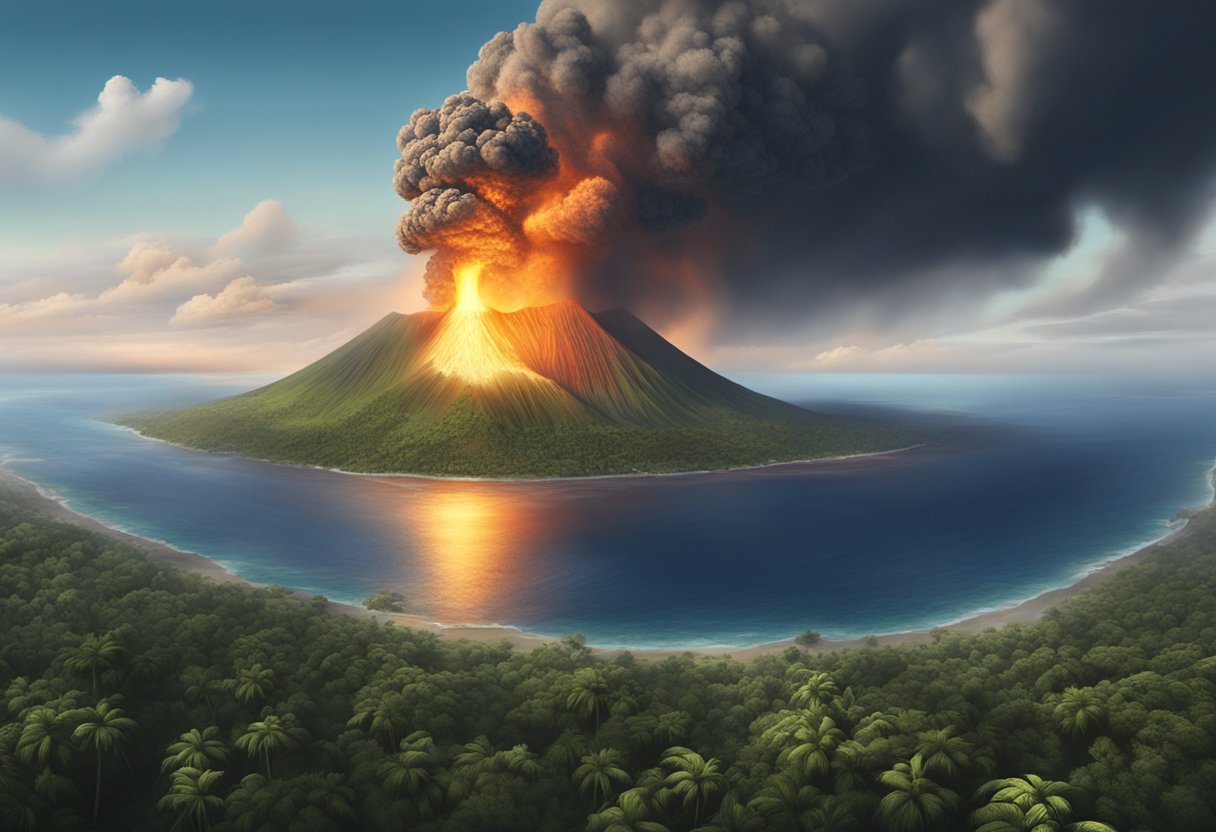
The Krakatoa eruption of 1883 stands as one of the most explosive volcanic events in recorded history. Located in Indonesia, the eruption was so massive that it destroyed over 70% of Krakatoa Island and created a caldera. This eruption had a profound impact on global climate, influencing weather patterns and temperatures for years. The force of the blast was equivalent to 200 megatons of TNT, significantly more powerful than some of the most destructive bombs in human history.
The immediate effects were catastrophic. Eruptions and subsequent tsunamis led to a death toll of between 36,417 and 120,000 people. What followed was a series of climate anomalies that spanned the globe. Volcanic ash and aerosols injected into the atmosphere scattered sunlight, which led to cooler global temperatures, a phenomenon known as a volcanic winter.
This atmospheric change caused vivid sunsets and unusual weather patterns. The eruption of Krakatoa in 1883 serves as a monumental example of how natural events can dramatically alter the Earth’s climate and have lasting impacts on both the environment and human societies.
Historical Context of Krakatoa
Krakatoa's eruption was a significant event that took place in the broader context of volcanic activity and geography unique to the region. Understanding its location and previous activity provides insights into the magnitude and consequences of this catastrophic event.
Geographical Setting
Krakatoa is located in the Sunda Strait, between the islands of Java and Sumatra in Indonesia. This area is part of the Pacific Ring of Fire, known for its frequent earthquakes and volcanic eruptions. The island of Krakatoa itself was relatively small, but its strategic position made its eruptions particularly impactful on the surrounding regions.
Rakata, one of Krakatoa’s main peaks, was part of a volcanic island group. The geography of the Sunda Strait allowed for the concentration of volcanic ash and debris, affecting marine and air currents. This led to widespread environmental disturbances following Krakatoa’s eruption, influencing atmospheric conditions globally.
Pre-1883 Volcanic Activity
Before the catastrophic eruption in 1883, Krakatoa had a history of volcanic activity, though less severe. Records indicate eruptions in the 5th century and several smaller eruptions in the 17th and 18th centuries. These incidents hinted at the volcano's potential for larger eruptions.
The Dutch East Indies administration monitored volcanic activity due to its impact on the region. However, the scale of the 1883 eruption was unprecedented. Previous activity laid the groundwork, creating unstable conditions in the volcanic structure. The build-up of gases and magma set the stage for the massive and devastating eruption that would come later.
The 1883 Eruption Event
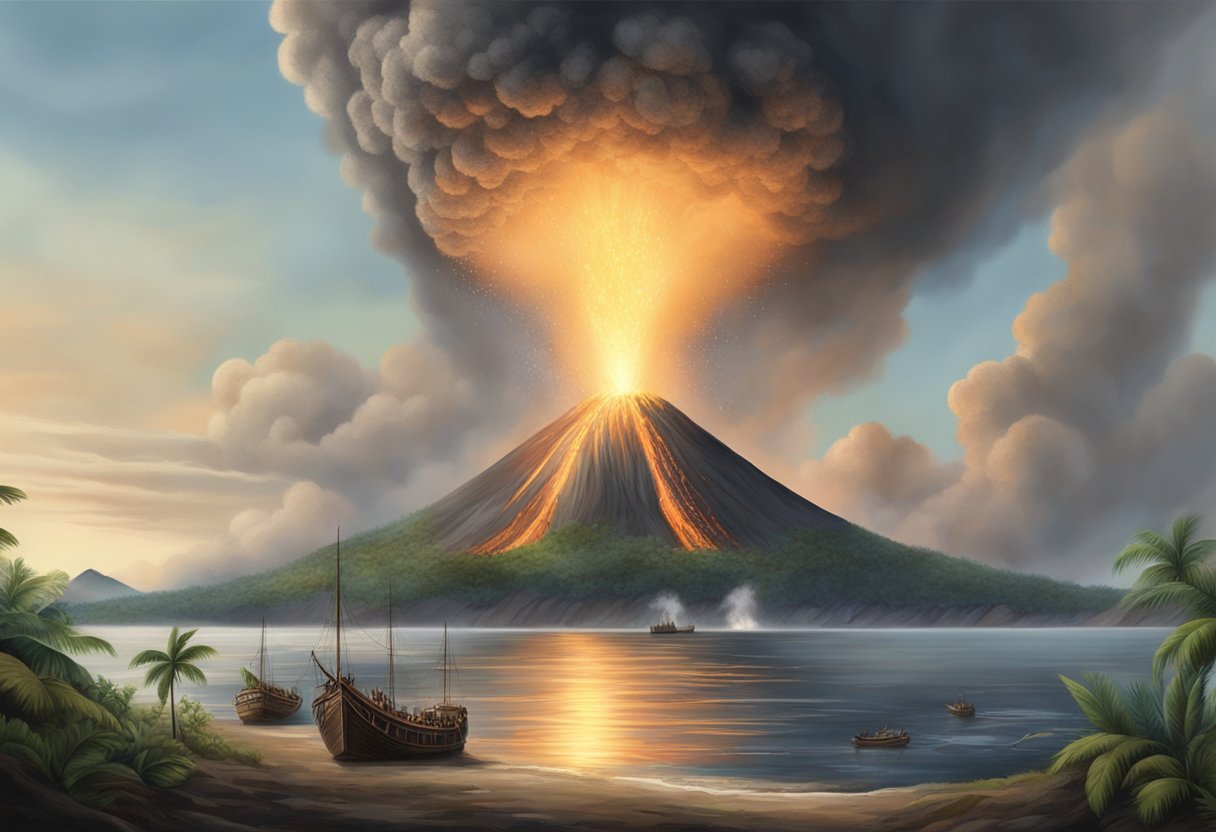
The eruption of Krakatoa in 1883 was a catastrophic event that reshaped the island and caused significant global climate impacts. Understanding the build-up, climactic explosions, and the formation of the caldera provides insight into this historic disaster.
Build-Up to the Cataclysm
Seismic activity around Krakatoa increased significantly in the years leading up to the eruption. Earthquakes were felt as far away as North Australia. In May 1883, volcanic activity intensified with ash eruptions reaching heights of up to 6 miles. The German warship Elisabeth witnessed a massive column of smoke and ash.
By August, multiple eruptions signaled an imminent disaster. Steam vents and strombolian eruptions from the northernmost cone, Perboewatan, added to the island's instability. Explosions became more frequent, leading to significant pressure build-up beneath the island.
The Climactic Explosions
The main event began on August 26, 1883. Initial explosions were followed by four massive eruptions on August 27, each more powerful than the last. The final explosion was heard over 3,000 miles away in Australia. A pressure wave circled the globe multiple times.
The energy released was equivalent to 200 megatons of TNT, causing tsunamis that devastated nearby coastlines, killing over 36,000 people. Ash and debris were ejected into the atmosphere, blocking sunlight and causing temperatures worldwide to drop.
Formation of the Caldera
Krakatoa's island structure was obliterated. The explosive eruption led to the collapse of the volcanic island's central portion, forming a large caldera. The new caldera was filled with seawater, transforming the area. Years later, a smaller island, known as Anak Krakatau or "Child of Krakatoa," emerged within this caldera. Anak Krakatau remains an active volcano, evidence of the ongoing geological instability in the region.
The 1883 eruption of Krakatoa is a stark reminder of nature's power and its ability to alter climate and geography in an instant. Understanding these events can help in preparing for future volcanic activity.
Immediate Consequences
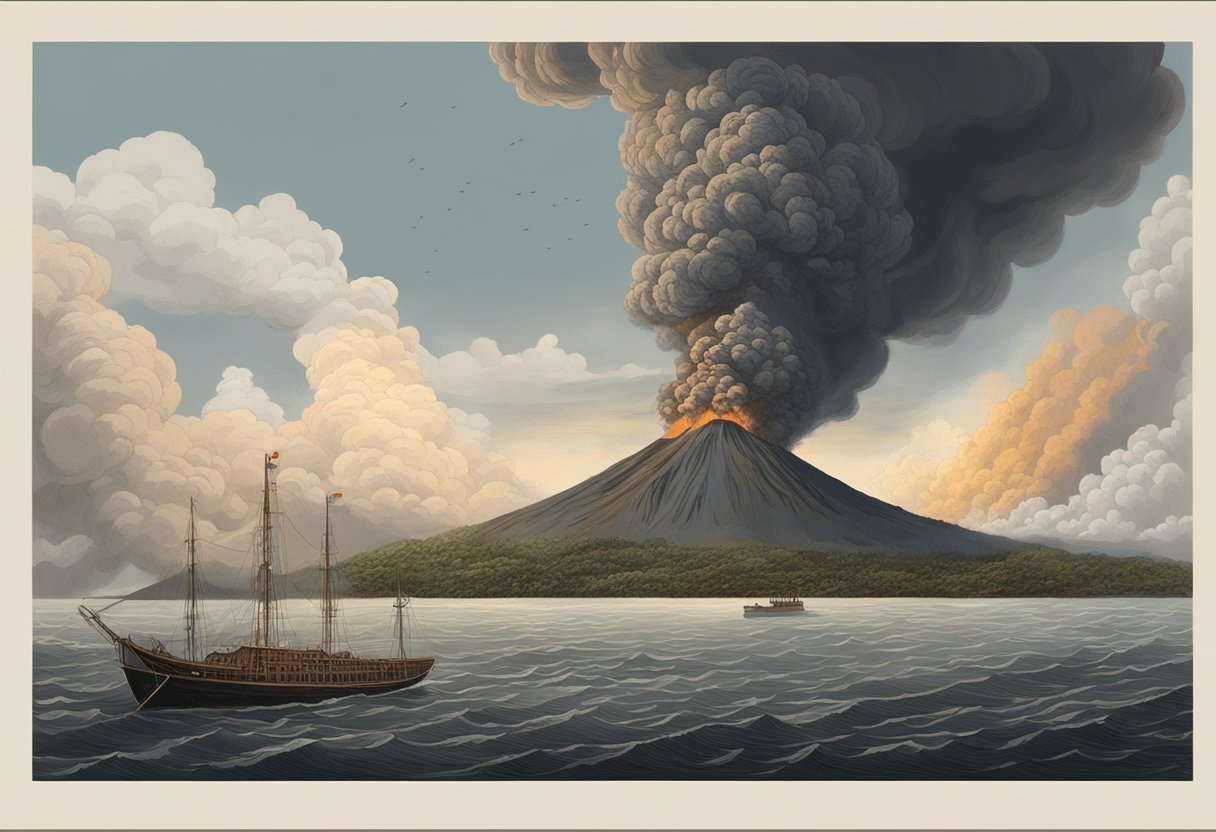
The 1883 eruption of Krakatoa had several devastating immediate consequences. These included massive tsunamis, extensive ash fall and pyroclastic flows, and significant impacts on nearby populated areas like Java and Sumatra.
Tsunami Generation
The eruption caused a series of powerful tsunamis. The initial explosion displaced a massive volume of water, generating waves over 30 meters high. These tsunamis devastated coastal villages on both Java and Sumatra. Thousands of people were swept away, with debris scattered along the shoreline. The death toll from the tsunamis alone was estimated at over 36,000 people. Ships were damaged or destroyed, and the wave impacts were felt as far away as South Africa.
Ash Fall and Pyroclastic Flows
The eruption sent colossal amounts of ash into the atmosphere, darkening the sky for days. Ash layers covered surrounding areas, destroying crops and causing buildings to collapse under the weight. Pyroclastic flows, which are fast-moving currents of hot gas and volcanic matter, swept across the island and surrounding seas. These flows obliterated anything in their path, contributing significantly to the death toll. The landscape was altered, with the volcano itself partially collapsing, leading to a reduction in the island's size.
Impact on Surrounding Areas
The immediate area around Krakatoa suffered extensive damage. Coastal villages in Java and Sumatra were almost completely destroyed. Survivors struggled with the loss of homes, food shortages, and water contamination due to ash and debris. The local economy was heavily affected as agriculture and fishing came to a halt. The massive death toll and the physical destruction created a humanitarian crisis, with relief efforts hampered by ongoing seismic activity and transportation challenges.
Global Environmental Impact

The 1883 eruption of Krakatoa had widespread effects on the atmosphere and climate, causing visible changes in the skies worldwide and leading to measurable cooling of global temperatures.
Atmospheric Effects
The eruption of Krakatoa released vast amounts of volcanic ash and gases into the atmosphere. These volcanic aerosols, such as ash and sulphate aerosols, spread across the globe. The ash clouds caused spectacular sunsets and sunrises due to the scattering of sunlight by the fine particles.
Additionally, the eruption produced loud sounds that were heard thousands of miles away, indicating the vast quantity of material ejected into the atmosphere. This atmospheric pollution persisted for years, affecting weather patterns and air quality globally.
Climate Anomalies and Cooling
Following the eruption, there were significant climate anomalies, primarily a noticeable cooling of the Earth's surface. The sulphate aerosols from the eruption reflected sunlight, reducing the amount of solar energy reaching the surface.
Global temperatures dropped by an average of 1.2 degrees Celsius in the year following the eruption. This cooling effect led to shortened growing seasons and impacted agriculture worldwide. Unusual weather patterns, such as longer and harsher winters, were reported in various regions, further highlighting the widespread climatic impact.
Climatic Models and Research
Researchers began to study the long-term climatic effects of volcanic eruptions after Krakatoa. Climate models developed to understand the eruption's impact have shown that such large-scale volcanic events can have lasting effects on global climate patterns.
These models demonstrated how atmospheric pollution from the eruption led to temporary but significant changes in weather systems. Scientific studies also confirmed that the sulphate aerosols played a crucial role in the cooling effect observed. Continued research on Krakatoa's eruption has greatly enhanced the understanding of the link between volcanic activity and global climate changes.
Societal and Cultural Impact
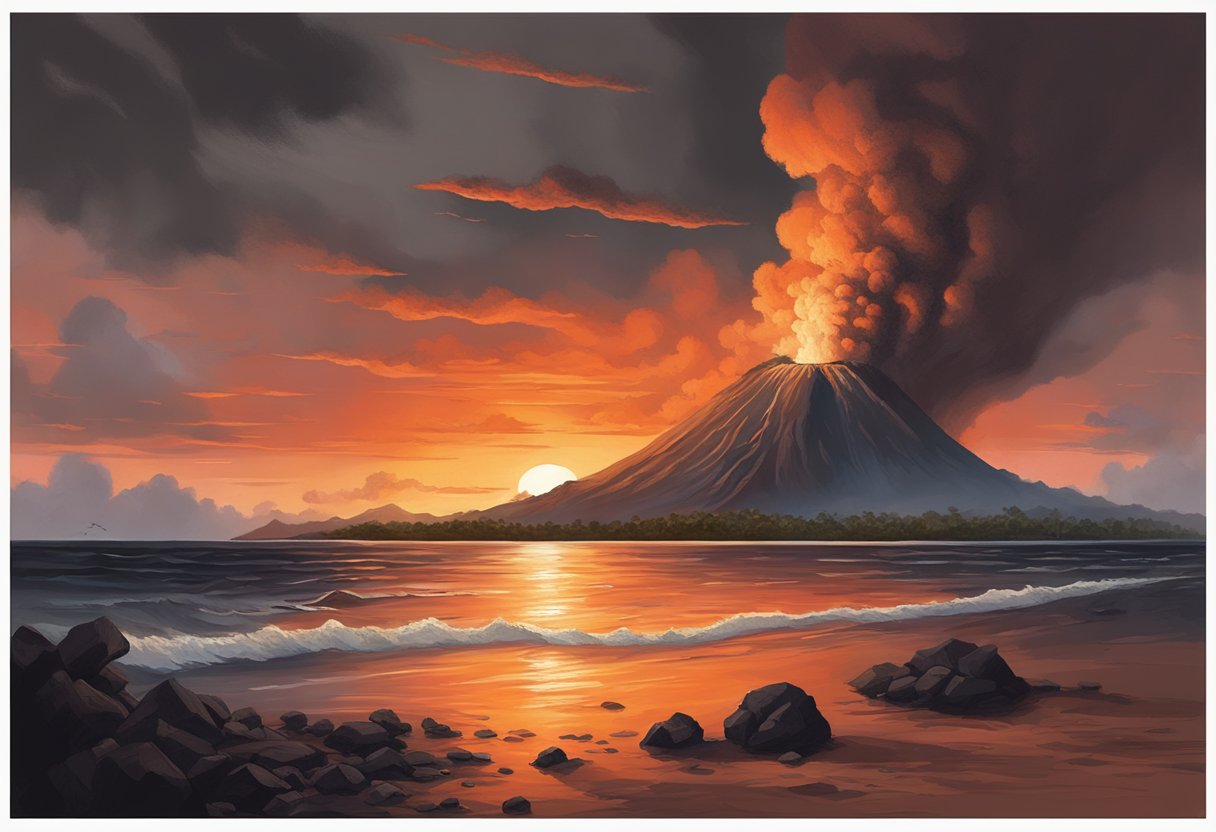
The eruption of Krakatoa in 1883 had immediate and long-term effects on society and culture. These impacts were felt both locally in Indonesia and globally.
Immediate Human Toll
The eruption resulted in significant loss of life. An estimated 36,000 people died, primarily due to tsunamis caused by the explosion. Coastal communities in the Dutch East Indies, particularly around the Sunda Strait, were devastated. Batavia (now Jakarta) experienced chaos as refugees poured in, seeking shelter and aid.
Survivors faced severe injuries, with many requiring medical attention. The immediate aftermath saw overwhelmed hospitals and relief efforts, highlighting the need for better disaster preparedness in the region.
Economic and Infrastructure Changes
The local economy suffered greatly. Agriculture was hit hard as ash covered farmland, rendering it useless for crops. Fishing industries struggled with contaminated waters. The destruction of ports and shipping routes further hampered trade.
Infrastructure, including homes, roads, and public buildings, was heavily damaged. Reconstruction efforts were slow, and the overall economy took years to recover. The Dutch East Indies government had to invest significantly in rebuilding efforts, straining their financial resources.
Cultural and Historical Legacy
The eruption shaped cultural narratives and historical records. It's remembered in Indonesian folklore and oral histories as a moment of profound change. Many local stories emphasize the power of nature and the vulnerability of human life.
Globally, Krakatoa's eruption became a subject of scientific study and popular fascination. It influenced art, literature, and even music, with references appearing in various works over the years. The 1883 event remains one of the most iconic volcanic eruptions in history, often cited in educational materials and media.
Scientific Insights and Advances
The Krakatoa eruption in 1883 provided significant advancements in the field of volcanology, climate science, and data acquisition methods. It inspired research that improved the understanding of volcanic eruptions, their climatic effects, and techniques for collecting and analyzing data.
Volcanology and Understanding Eruptions
The 1883 Krakatoa eruption was studied extensively, offering insights into volcanic behavior. Scientists observed the sequence of eruptions and the resulting pyroclastic flows, which led to better predictive models.
They also examined tectonic plates and their movement, improving knowledge of the link between tectonics and volcanic activity. This event helped refine theories on how volcanoes interact with the Earth's crust.
Advances in Climate Science
The eruption had a profound impact on climate, lowering global temperatures. Massive amounts of ash and sulfur dioxide were released into the atmosphere, forming aerosols that reflected sunlight.
Researchers used ice cores to study historical climate data and verified this cooling effect. These findings contributed to the field of paleoclimatology, allowing scientists to understand volcanic influences on climate patterns more accurately.
Acquisition and Analysis of Data
Data collection and analysis saw improvements due to this event. Observations from around the world, including meteorological records, were crucial. Early barometers and thermometers were used to measure changes in weather patterns.
Modern researchers, such as those from the NOAA, utilize this historical data to build more accurate climate models. The methods of gathering and interpreting data from the Krakatoa eruption set new standards for scientific investigation.
Modern Legacy and Monitoring
The Krakatoa eruption of 1883 had lasting impacts not just on global climate but also on volcanic monitoring and preparedness. The formation of Anak Krakatau and ongoing seismic activity show the persistent influence of Krakatoa.
Anak Krakatau and Continued Activity
After the 1883 eruption, a new island, Anak Krakatau, began forming in 1927. Its name means "Child of Krakatau". This island has been the site of numerous smaller eruptions. In December 2018, one such eruption caused a deadly tsunami.
Anak Krakatau’s continued activity highlights the lasting nature of volcanic formations in the region. These occurrences are monitored closely. Scientists track seismic activity and pyroclastic flows to understand this volcano better.
Volcano Monitoring and Early Warning
Volcano monitoring has seen advances since the 1883 eruption. Modern technology includes seismographs, satellite imagery, and gas emission sensors. These tools help predict eruptions by detecting changes in seismic activity and ground deformation.
Early warning systems have been crucial in reducing the impact of eruptions. Governments and organizations set up alert systems that can inform communities of potential dangers. This allows for faster evacuations and improved safety measures.
Lessons for Future Preparedness
The 1883 eruption of Krakatoa taught many lessons about disaster preparedness. Governments now focus on education and preparation to minimize risk. Building awareness about the dangers of pyroclastic flows and tsunamis is key.
Regions on the Indo-Australian and Asian plates have disaster management plans in place. These include evacuation routes and emergency supplies. By learning from past events, they aim to better protect their populations in the face of future volcanic activity.



